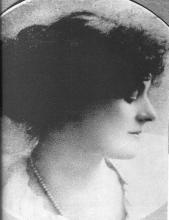“Our abilities are limited only by our perceptions.”
On her blog, Read, Write, Reflect, Katherine Sokolowski recently wrote about her childhood impression that authors were a “chosen few” who “lived in magical worlds.”
This got me thinking about my experience with authors as a child. The town where I grew up (and am lucky enough to still live) is only about an hour and a half from New York City. When I was a kid in the sixties there were at least 10 working farms in town (3 on my road alone) and there was exactly one “development.” Needless to say, it was a pretty peaceful place. The perfect place for writers to get away from the hustle and bustle of the city, yet close enough to go in when they had to.
Because the mother of one of my classmates was a writer, I was lucky enough to know a “real” author. I remember Mrs. Stevens bringing Where the Wild Things Are into school one day. It was still in great big sheets, just as it had come off the printing press, and she showed us how it was cut and assembled into a book. In 1969, her book, The Birth of Sunset’s Kittens, was published. I loved this book and I checked it out of the library many times. To me, Mrs. Stevens was very sophisticated and glamorous, and reading her book made me feel that way, too.
Imagine my delight, then, when I found a copy of this book at a local book sale! I scooped up this precious find and reread it on the spot. It is longer than I remember, and includes more details than I imagine our librarian was comfortable reading to us, but it’s as charming as ever. (And it smells like it’s been in a library for 35 years! Heavenly!)
This isn’t the first time I’ve found a book written by Mrs. Stevens at a book sale. One year I found a copy of Catch a Cricket, a title I wasn’t familiar with. And I’ve found several copies of Anna, Grandpa, and the Big Storm over the years, all of which are now in my book collection.
My husband thinks I’m nuts to keep all these books. He doesn’t understand that I keep them because of what they represent: a portal to my childhood and the person I was. I look back on that awkward, self-conscious nine-year-old and am grateful beyond words to Mrs. Stevens for writing these books, and for being such a great role model. Her books helped fan the flames of my passion for reading. A passion that helped me become the person I am today.
Thank you, as always, to Stacey and Ruth at Two Writing Teachers for hosting the Slice of Life Challenge.























